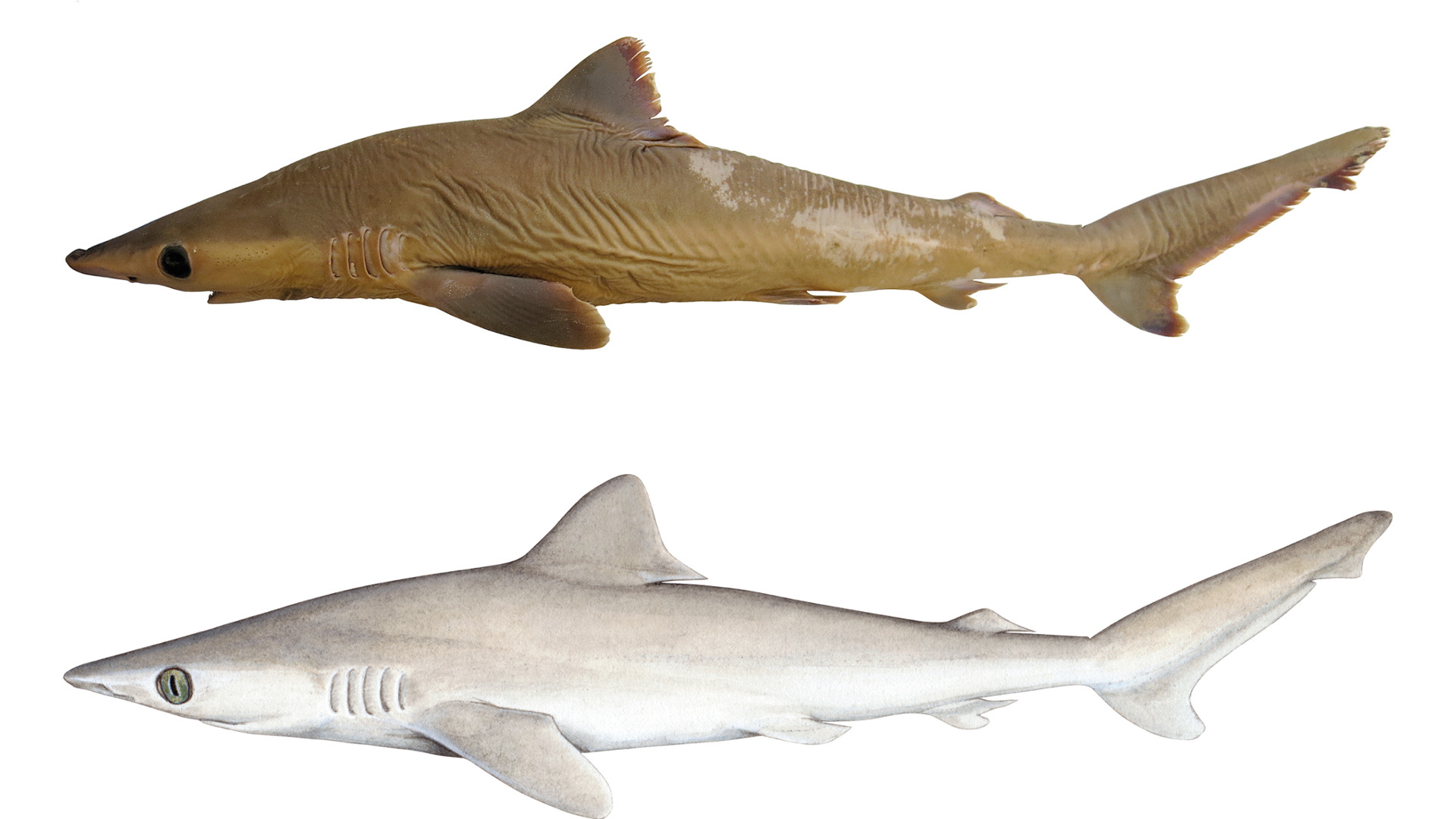Over the past two decades more than 260 new species of shark have been discovered by researchers around the world, increasing the number of known species by more than 20 percent.
Now we can add one more to the list. A paper published Jan. 2 in the journal PLOS ONE describes a striking new shark species from the waters off the coasts of Borneo, Thailand and Vietnam. It looks like some similar “whaler shark” species — a genus that also includes the well-known bull shark and blacktip shark — but its teeth, snout, fins and vertebrae are distinctive enough that scientists have declared it to be its own species.
There’s just one problem: The shark was identified from decades-old museum samples and hasn’t been seen in the wild since the 1930s.
That’s why the researchers have named the species “lost shark.”
More formally they’ve dubbed it Carcharhinus obsolerus — the second word in the taxonomic name is Latin for “extinct.”
Despite the name, researchers still hope a game of hide-and-seek might find evidence that lost sharks still exist.
“It is quite possible that the lost shark still roams the coastal waters of the South China Sea, but it was so named because we could not locate specimens” in museum collections or the wild, says coauthor Peter M. Kyne, a conservation biologist and senior research fellow at Australia’s Charles Darwin University.
Of course, we don’t know exactly where to look, as “lost shark” was actually only officially observed three times — two juvenile specimens and a late-term embryo. The original researchers that collected the specimens decades ago never adequately described the species, so the current team has taken steps to complete that process, even though the creature’s historic range and role in the ecosystem are not understood.
Why take the effort to describe the lost shark now, so long after it was last seen? As noted in the paper, similar coastal fish species in Southeast Asia currently face enormous pressure from human activity. Last year the Asia Foundation went so far as to say that many marine species in the area are “near collapse from overfishing.” That makes it critical to identify all of the species — shark or otherwise — that swim in the region so we know what needs to be protected before they disappear for good.
More broadly, the identification of lost shark relates to a bigger initiative, the ongoing Global Shark Trends Project, which aims to assess the extinction risk of the world’s shark and ray species (collectively known as chondrichthyan species) by the end of next year. That’s a necessary process for the nations that signed the Convention on Biological Diversity, which by 2020 must ensure that their fisheries are sustainable and that further extinctions are avoided.
As part of the shark-trends project, Kyle says they will spend the coming year examining the conservation status of many other newly described shark species.
Meanwhile there’s hope that by formally identifying and naming this species, even decades after its last sighting, it may be “lost” no more.
That’s happened in the past. “A close relative, the Borneo shark, was once thought to be lost, with no records since 1937,” Kyne points out. “It was rediscovered in 2004 during fish-market surveys. We hope that the lost shark can be re-found in the future, and so we don’t formally consider it to be extinct.”
It may need a new taxonomic name if that rediscovery ever comes to pass, but for now the lost shark’s name is a reminder of the pressure other shark species face from overfishing — and a hope that other species won’t also disappear.



1 thought on “Found But Lost: Newly Discovered Shark May Be Extinct”
Comments are closed.